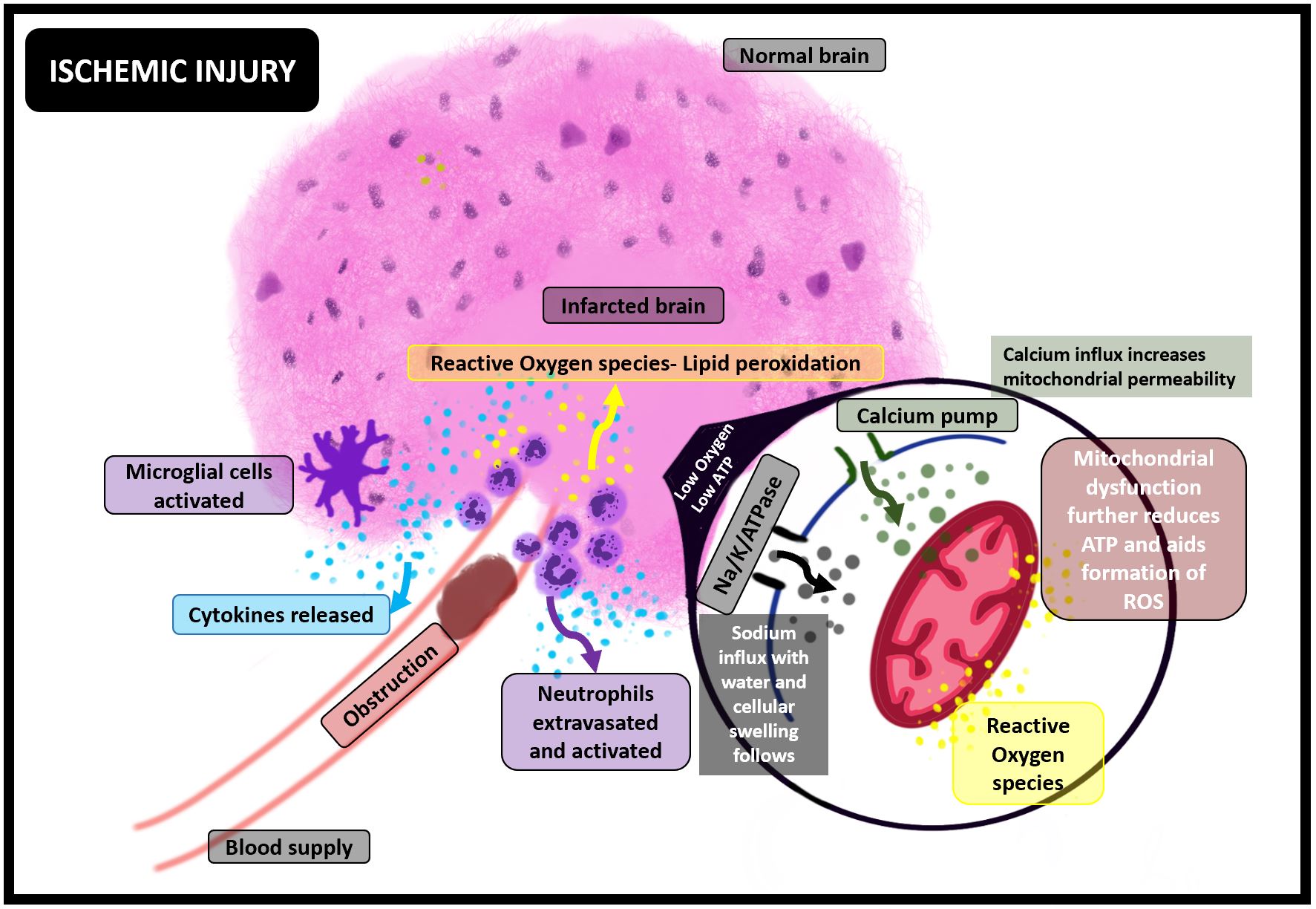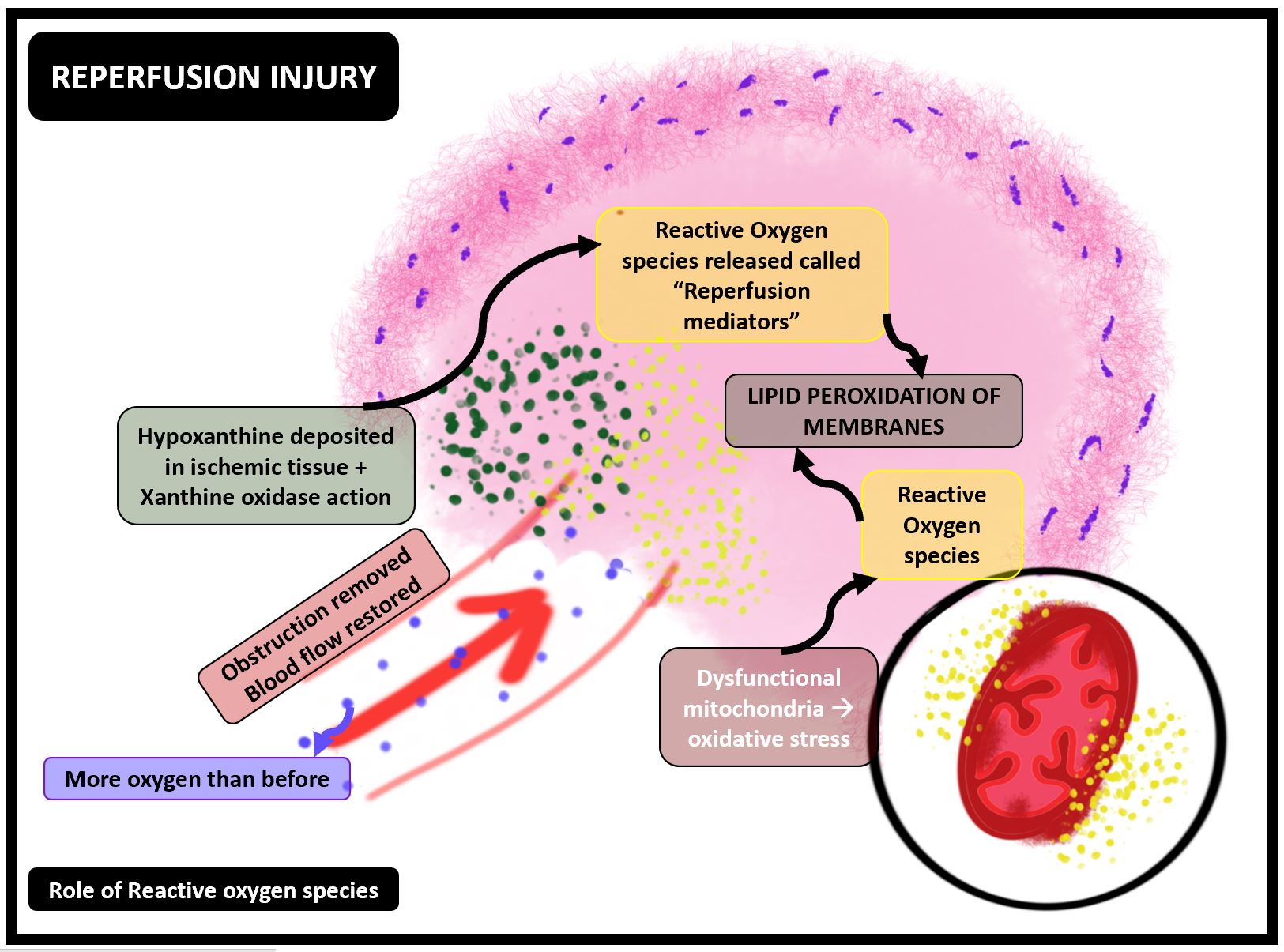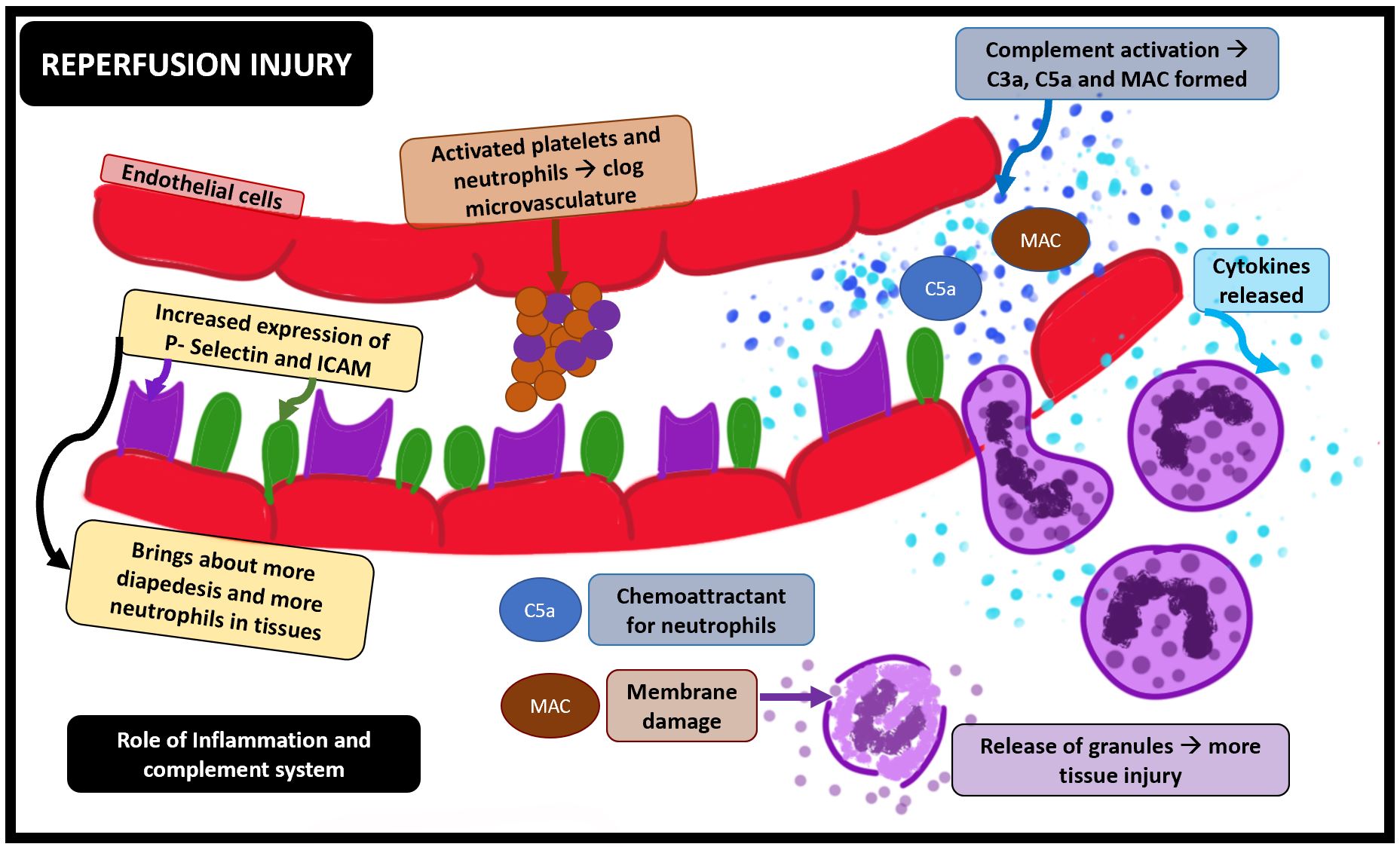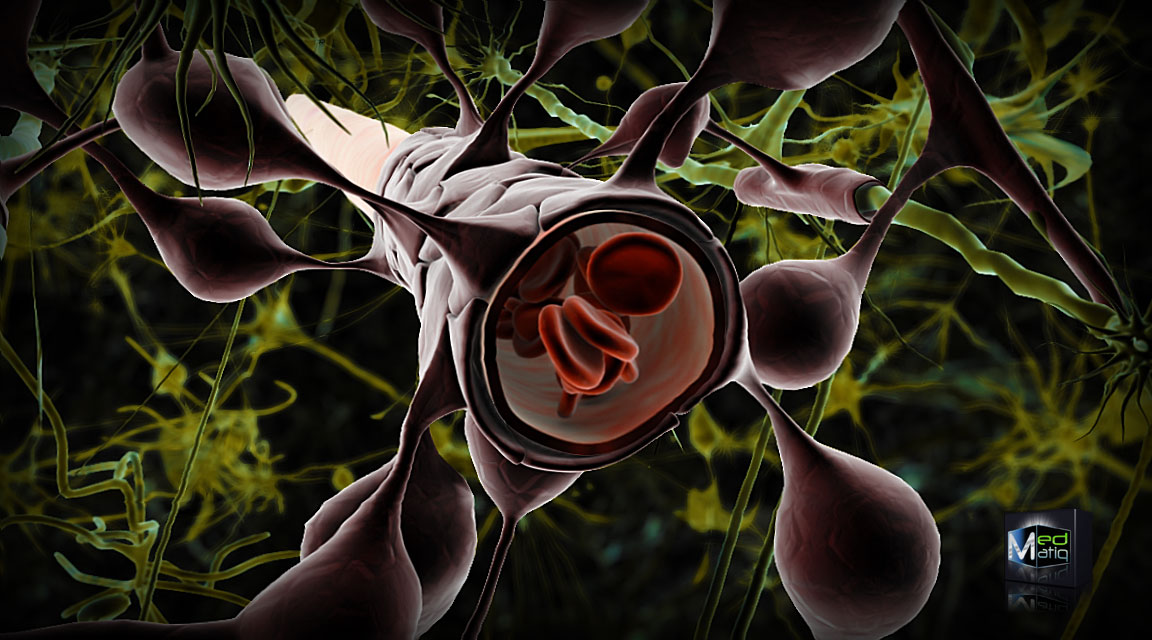[1]
Virani SS, Alonso A, Benjamin EJ, Bittencourt MS, Callaway CW, Carson AP, Chamberlain AM, Chang AR, Cheng S, Delling FN, Djousse L, Elkind MSV, Ferguson JF, Fornage M, Khan SS, Kissela BM, Knutson KL, Kwan TW, Lackland DT, Lewis TT, Lichtman JH, Longenecker CT, Loop MS, Lutsey PL, Martin SS, Matsushita K, Moran AE, Mussolino ME, Perak AM, Rosamond WD, Roth GA, Sampson UKA, Satou GM, Schroeder EB, Shah SH, Shay CM, Spartano NL, Stokes A, Tirschwell DL, VanWagner LB, Tsao CW, American Heart Association Council on Epidemiology and Prevention Statistics Committee and Stroke Statistics Subcommittee. Heart Disease and Stroke Statistics-2020 Update: A Report From the American Heart Association. Circulation. 2020 Mar 3:141(9):e139-e596. doi: 10.1161/CIR.0000000000000757. Epub 2020 Jan 29
[PubMed PMID: 31992061]
[3]
Butcher K, Parsons M, Baird T, Barber A, Donnan G, Desmond P, Tress B, Davis S. Perfusion thresholds in acute stroke thrombolysis. Stroke. 2003 Sep:34(9):2159-64
[PubMed PMID: 12893953]
[4]
Gomez CR. Time Is Brain: The Stroke Theory of Relativity. Journal of stroke and cerebrovascular diseases : the official journal of National Stroke Association. 2018 Aug:27(8):2214-2227. doi: 10.1016/j.jstrokecerebrovasdis.2018.04.001. Epub 2018 Apr 25
[PubMed PMID: 29705088]
[5]
Heiss WD. The ischemic penumbra: correlates in imaging and implications for treatment of ischemic stroke. The Johann Jacob Wepfer award 2011. Cerebrovascular diseases (Basel, Switzerland). 2011:32(4):307-20. doi: 10.1159/000330462. Epub 2011 Sep 15
[PubMed PMID: 21921593]
[6]
Hacke W, Kaste M, Fieschi C, Toni D, Lesaffre E, von Kummer R, Boysen G, Bluhmki E, Höxter G, Mahagne MH. Intravenous thrombolysis with recombinant tissue plasminogen activator for acute hemispheric stroke. The European Cooperative Acute Stroke Study (ECASS). JAMA. 1995 Oct 4:274(13):1017-25
[PubMed PMID: 7563451]
[7]
National Institute of Neurological Disorders and Stroke rt-PA Stroke Study Group. Tissue plasminogen activator for acute ischemic stroke. The New England journal of medicine. 1995 Dec 14:333(24):1581-7
[PubMed PMID: 7477192]
[8]
Nogueira RG, Jadhav AP, Haussen DC, Bonafe A, Budzik RF, Bhuva P, Yavagal DR, Ribo M, Cognard C, Hanel RA, Sila CA, Hassan AE, Millan M, Levy EI, Mitchell P, Chen M, English JD, Shah QA, Silver FL, Pereira VM, Mehta BP, Baxter BW, Abraham MG, Cardona P, Veznedaroglu E, Hellinger FR, Feng L, Kirmani JF, Lopes DK, Jankowitz BT, Frankel MR, Costalat V, Vora NA, Yoo AJ, Malik AM, Furlan AJ, Rubiera M, Aghaebrahim A, Olivot JM, Tekle WG, Shields R, Graves T, Lewis RJ, Smith WS, Liebeskind DS, Saver JL, Jovin TG, DAWN Trial Investigators. Thrombectomy 6 to 24 Hours after Stroke with a Mismatch between Deficit and Infarct. The New England journal of medicine. 2018 Jan 4:378(1):11-21. doi: 10.1056/NEJMoa1706442. Epub 2017 Nov 11
[PubMed PMID: 29129157]
[9]
Lieb M, Shah U, Hines GL. Cerebral hyperperfusion syndrome after carotid intervention: a review. Cardiology in review. 2012 Mar-Apr:20(2):84-9. doi: 10.1097/CRD.0b013e318237eef8. Epub
[PubMed PMID: 22183061]
[10]
Farooq MU, Goshgarian C, Min J, Gorelick PB. Pathophysiology and management of reperfusion injury and hyperperfusion syndrome after carotid endarterectomy and carotid artery stenting. Experimental & translational stroke medicine. 2016:8(1):7. doi: 10.1186/s13231-016-0021-2. Epub 2016 Sep 6
[PubMed PMID: 27602202]
[11]
Eltzschig HK, Eckle T. Ischemia and reperfusion--from mechanism to translation. Nature medicine. 2011 Nov 7:17(11):1391-401. doi: 10.1038/nm.2507. Epub 2011 Nov 7
[PubMed PMID: 22064429]
[12]
Miller DJ, Simpson JR, Silver B. Safety of thrombolysis in acute ischemic stroke: a review of complications, risk factors, and newer technologies. The Neurohospitalist. 2011 Jul:1(3):138-47. doi: 10.1177/1941875211408731. Epub
[PubMed PMID: 23983849]
[13]
Wahlgren N, Ahmed N, Dávalos A, Ford GA, Grond M, Hacke W, Hennerici MG, Kaste M, Kuelkens S, Larrue V, Lees KR, Roine RO, Soinne L, Toni D, Vanhooren G, SITS-MOST investigators. Thrombolysis with alteplase for acute ischaemic stroke in the Safe Implementation of Thrombolysis in Stroke-Monitoring Study (SITS-MOST): an observational study. Lancet (London, England). 2007 Jan 27:369(9558):275-82
[PubMed PMID: 17258667]
[14]
Goyal M, Menon BK, van Zwam WH, Dippel DW, Mitchell PJ, Demchuk AM, Dávalos A, Majoie CB, van der Lugt A, de Miquel MA, Donnan GA, Roos YB, Bonafe A, Jahan R, Diener HC, van den Berg LA, Levy EI, Berkhemer OA, Pereira VM, Rempel J, Millán M, Davis SM, Roy D, Thornton J, Román LS, Ribó M, Beumer D, Stouch B, Brown S, Campbell BC, van Oostenbrugge RJ, Saver JL, Hill MD, Jovin TG, HERMES collaborators. Endovascular thrombectomy after large-vessel ischaemic stroke: a meta-analysis of individual patient data from five randomised trials. Lancet (London, England). 2016 Apr 23:387(10029):1723-31. doi: 10.1016/S0140-6736(16)00163-X. Epub 2016 Feb 18
[PubMed PMID: 26898852]
Level 1 (high-level) evidence
[15]
Albers GW, Marks MP, Kemp S, Christensen S, Tsai JP, Ortega-Gutierrez S, McTaggart RA, Torbey MT, Kim-Tenser M, Leslie-Mazwi T, Sarraj A, Kasner SE, Ansari SA, Yeatts SD, Hamilton S, Mlynash M, Heit JJ, Zaharchuk G, Kim S, Carrozzella J, Palesch YY, Demchuk AM, Bammer R, Lavori PW, Broderick JP, Lansberg MG, DEFUSE 3 Investigators. Thrombectomy for Stroke at 6 to 16 Hours with Selection by Perfusion Imaging. The New England journal of medicine. 2018 Feb 22:378(8):708-718. doi: 10.1056/NEJMoa1713973. Epub 2018 Jan 24
[PubMed PMID: 29364767]
[16]
Kalogeris T, Baines CP, Krenz M, Korthuis RJ. Cell biology of ischemia/reperfusion injury. International review of cell and molecular biology. 2012:298():229-317. doi: 10.1016/B978-0-12-394309-5.00006-7. Epub
[PubMed PMID: 22878108]
[17]
Halestrap AP. A pore way to die: the role of mitochondria in reperfusion injury and cardioprotection. Biochemical Society transactions. 2010 Aug:38(4):841-60. doi: 10.1042/BST0380841. Epub
[PubMed PMID: 20658967]
[18]
Bolli R, Jeroudi MO, Patel BS, Aruoma OI, Halliwell B, Lai EK, McCay PB. Marked reduction of free radical generation and contractile dysfunction by antioxidant therapy begun at the time of reperfusion. Evidence that myocardial "stunning" is a manifestation of reperfusion injury. Circulation research. 1989 Sep:65(3):607-22
[PubMed PMID: 2548761]
[19]
Jennings RB. Historical perspective on the pathology of myocardial ischemia/reperfusion injury. Circulation research. 2013 Aug 2:113(4):428-38. doi: 10.1161/CIRCRESAHA.113.300987. Epub
[PubMed PMID: 23908330]
Level 3 (low-level) evidence
[20]
Yang C, Hawkins KE, Doré S, Candelario-Jalil E. Neuroinflammatory mechanisms of blood-brain barrier damage in ischemic stroke. American journal of physiology. Cell physiology. 2019 Feb 1:316(2):C135-C153. doi: 10.1152/ajpcell.00136.2018. Epub 2018 Oct 31
[PubMed PMID: 30379577]
[21]
Eltzschig HK, Carmeliet P. Hypoxia and inflammation. The New England journal of medicine. 2011 Feb 17:364(7):656-65. doi: 10.1056/NEJMra0910283. Epub
[PubMed PMID: 21323543]
[22]
Panés J, Perry M, Granger DN. Leukocyte-endothelial cell adhesion: avenues for therapeutic intervention. British journal of pharmacology. 1999 Feb:126(3):537-50
[PubMed PMID: 10188959]
[23]
Alawieh A, Elvington A, Tomlinson S. Complement in the Homeostatic and Ischemic Brain. Frontiers in immunology. 2015:6():417. doi: 10.3389/fimmu.2015.00417. Epub 2015 Aug 12
[PubMed PMID: 26322048]
[24]
Zhang M, Austen WG Jr, Chiu I, Alicot EM, Hung R, Ma M, Verna N, Xu M, Hechtman HB, Moore FD Jr, Carroll MC. Identification of a specific self-reactive IgM antibody that initiates intestinal ischemia/reperfusion injury. Proceedings of the National Academy of Sciences of the United States of America. 2004 Mar 16:101(11):3886-91
[PubMed PMID: 14999103]
[25]
Engelhardt B, Coisne C. Fluids and barriers of the CNS establish immune privilege by confining immune surveillance to a two-walled castle moat surrounding the CNS castle. Fluids and barriers of the CNS. 2011 Jan 18:8(1):4. doi: 10.1186/2045-8118-8-4. Epub 2011 Jan 18
[PubMed PMID: 21349152]
[26]
Mun-Bryce S, Rosenberg GA. Matrix metalloproteinases in cerebrovascular disease. Journal of cerebral blood flow and metabolism : official journal of the International Society of Cerebral Blood Flow and Metabolism. 1998 Nov:18(11):1163-72
[PubMed PMID: 9809504]
[27]
Warach S, Latour LL. Evidence of reperfusion injury, exacerbated by thrombolytic therapy, in human focal brain ischemia using a novel imaging marker of early blood-brain barrier disruption. Stroke. 2004 Nov:35(11 Suppl 1):2659-61
[PubMed PMID: 15472105]
[28]
Campbell BCV, Ma H, Parsons MW, Churilov L, Yassi N, Kleinig TJ, Hsu CY, Dewey HM, Butcher KS, Yan B, Desmond PM, Wijeratne T, Curtze S, Barber PA, De Silva DA, Thijs V, Levi CR, Bladin CF, Sharma G, Bivard A, Donnan GA, Davis SM. Association of Reperfusion After Thrombolysis With Clinical Outcome Across the 4.5- to 9-Hours and Wake-up Stroke Time Window: A Meta-Analysis of the EXTEND and EPITHET Randomized Clinical Trials. JAMA neurology. 2021 Feb 1:78(2):236-240. doi: 10.1001/jamaneurol.2020.4123. Epub
[PubMed PMID: 33137171]
[29]
Baird AE, Benfield A, Schlaug G, Siewert B, Lövblad KO, Edelman RR, Warach S. Enlargement of human cerebral ischemic lesion volumes measured by diffusion-weighted magnetic resonance imaging. Annals of neurology. 1997 May:41(5):581-9
[PubMed PMID: 9153519]
[30]
Barber PA, Darby DG, Desmond PM, Yang Q, Gerraty RP, Jolley D, Donnan GA, Tress BM, Davis SM. Prediction of stroke outcome with echoplanar perfusion- and diffusion-weighted MRI. Neurology. 1998 Aug:51(2):418-26
[PubMed PMID: 9710013]
[31]
Zhang Y, Stevenson GD, Barber C, Furenlid LR, Barrett HH, Woolfenden JM, Zhao M, Liu Z. Imaging of rat cerebral ischemia-reperfusion injury using(99m)Tc-labeled duramycin. Nuclear medicine and biology. 2013 Jan:40(1):80-8. doi: 10.1016/j.nucmedbio.2012.09.004. Epub 2012 Nov 2
[PubMed PMID: 23123139]
[32]
Nour M, Scalzo F, Liebeskind DS. Ischemia-reperfusion injury in stroke. Interventional neurology. 2013 Sep:1(3-4):185-99. doi: 10.1159/000353125. Epub
[PubMed PMID: 25187778]
[33]
Choi HY, Lee KM, Kim HG, Kim EJ, Choi WS, Kim BJ, Heo SH, Chang DI. Role of Hyperintense Acute Reperfusion Marker for Classifying the Stroke Etiology. Frontiers in neurology. 2017:8():630. doi: 10.3389/fneur.2017.00630. Epub 2017 Nov 29
[PubMed PMID: 29276498]
[34]
Ames A 3rd, Wright RL, Kowada M, Thurston JM, Majno G. Cerebral ischemia. II. The no-reflow phenomenon. The American journal of pathology. 1968 Feb:52(2):437-53
[PubMed PMID: 5635861]
[35]
del Zoppo GJ, Schmid-Schönbein GW, Mori E, Copeland BR, Chang CM. Polymorphonuclear leukocytes occlude capillaries following middle cerebral artery occlusion and reperfusion in baboons. Stroke. 1991 Oct:22(10):1276-83
[PubMed PMID: 1926239]
[36]
Kloner RA, Ganote CE, Jennings RB. The "no-reflow" phenomenon after temporary coronary occlusion in the dog. The Journal of clinical investigation. 1974 Dec:54(6):1496-508
[PubMed PMID: 4140198]
[37]
Sun WH, He F, Zhang NN, Zhao ZA, Chen HS. Time dependent neuroprotection of dexamethasone in experimental focal cerebral ischemia: The involvement of NF-κB pathways. Brain research. 2018 Dec 15:1701():237-245. doi: 10.1016/j.brainres.2018.09.029. Epub 2018 Sep 21
[PubMed PMID: 30248332]
[38]
Ohsawa I, Ishikawa M, Takahashi K, Watanabe M, Nishimaki K, Yamagata K, Katsura K, Katayama Y, Asoh S, Ohta S. Hydrogen acts as a therapeutic antioxidant by selectively reducing cytotoxic oxygen radicals. Nature medicine. 2007 Jun:13(6):688-94
[PubMed PMID: 17486089]
[40]
Oharazawa H, Igarashi T, Yokota T, Fujii H, Suzuki H, Machide M, Takahashi H, Ohta S, Ohsawa I. Protection of the retina by rapid diffusion of hydrogen: administration of hydrogen-loaded eye drops in retinal ischemia-reperfusion injury. Investigative ophthalmology & visual science. 2010 Jan:51(1):487-92. doi: 10.1167/iovs.09-4089. Epub 2009 Oct 15
[PubMed PMID: 19834032]
[41]
Marzi I, Bühren V, Schüttler A, Trentz O. Value of superoxide dismutase for prevention of multiple organ failure after multiple trauma. The Journal of trauma. 1993 Jul:35(1):110-9; discussion 119-20
[PubMed PMID: 8331700]
[42]
Wang Q, Tompkins KD, Simonyi A, Korthuis RJ, Sun AY, Sun GY. Apocynin protects against global cerebral ischemia-reperfusion-induced oxidative stress and injury in the gerbil hippocampus. Brain research. 2006 May 23:1090(1):182-9
[PubMed PMID: 16650838]
[43]
Hu Q, Manaenko A, Bian H, Guo Z, Huang JL, Guo ZN, Yang P, Tang J, Zhang JH. Hyperbaric Oxygen Reduces Infarction Volume and Hemorrhagic Transformation Through ATP/NAD(+)/Sirt1 Pathway in Hyperglycemic Middle Cerebral Artery Occlusion Rats. Stroke. 2017 Jun:48(6):1655-1664. doi: 10.1161/STROKEAHA.116.015753. Epub 2017 May 11
[PubMed PMID: 28495827]
[44]
Lyden P, Hemmen T, Grotta J, Rapp K, Ernstrom K, Rzesiewicz T, Parker S, Concha M, Hussain S, Agarwal S, Meyer B, Jurf J, Altafullah I, Raman R, Collaborators. Results of the ICTuS 2 Trial (Intravascular Cooling in the Treatment of Stroke 2). Stroke. 2016 Dec:47(12):2888-2895
[PubMed PMID: 27834742]
[45]
Li Y, Zhong W, Jiang Z, Tang X. New progress in the approaches for blood-brain barrier protection in acute ischemic stroke. Brain research bulletin. 2019 Jan:144():46-57. doi: 10.1016/j.brainresbull.2018.11.006. Epub 2018 Nov 15
[PubMed PMID: 30448453]
[46]
Michalski D, Pelz J, Weise C, Kacza J, Boltze J, Grosche J, Kamprad M, Schneider D, Hobohm C, Härtig W. Early outcome and blood-brain barrier integrity after co-administered thrombolysis and hyperbaric oxygenation in experimental stroke. Experimental & translational stroke medicine. 2011 Jun 16:3(1):5. doi: 10.1186/2040-7378-3-5. Epub 2011 Jun 16
[PubMed PMID: 21679435]
[47]
Kim SY, Cheon SY, Kim EJ, Lee JH, Kam EH, Kim JM, Park M, Koo BN. Isoflurane Postconditioning Inhibits tPA-Induced Matrix Metalloproteinases Activation After Hypoxic Injury via Low-Density Lipoprotein Receptor-Related Protein and Extracellular Signal-Regulated Kinase Pathway. Neurochemical research. 2017 May:42(5):1533-1542. doi: 10.1007/s11064-017-2211-2. Epub 2017 Mar 16
[PubMed PMID: 28303501]
[48]
Yang Y, Yang LY, Orban L, Cuylear D, Thompson J, Simon B, Yang Y. Non-invasive vagus nerve stimulation reduces blood-brain barrier disruption in a rat model of ischemic stroke. Brain stimulation. 2018 Jul-Aug:11(4):689-698. doi: 10.1016/j.brs.2018.01.034. Epub 2018 Feb 15
[PubMed PMID: 29496430]
[49]
Diringer MN, Edwards DF. Admission to a neurologic/neurosurgical intensive care unit is associated with reduced mortality rate after intracerebral hemorrhage. Critical care medicine. 2001 Mar:29(3):635-40
[PubMed PMID: 11373434]
[50]
Rapoport SI. Osmotic opening of the blood-brain barrier: principles, mechanism, and therapeutic applications. Cellular and molecular neurobiology. 2000 Apr:20(2):217-30
[PubMed PMID: 10696511]
[51]
Hacke W, Donnan G, Fieschi C, Kaste M, von Kummer R, Broderick JP, Brott T, Frankel M, Grotta JC, Haley EC Jr, Kwiatkowski T, Levine SR, Lewandowski C, Lu M, Lyden P, Marler JR, Patel S, Tilley BC, Albers G, Bluhmki E, Wilhelm M, Hamilton S, ATLANTIS Trials Investigators, ECASS Trials Investigators, NINDS rt-PA Study Group Investigators. Association of outcome with early stroke treatment: pooled analysis of ATLANTIS, ECASS, and NINDS rt-PA stroke trials. Lancet (London, England). 2004 Mar 6:363(9411):768-74
[PubMed PMID: 15016487]




